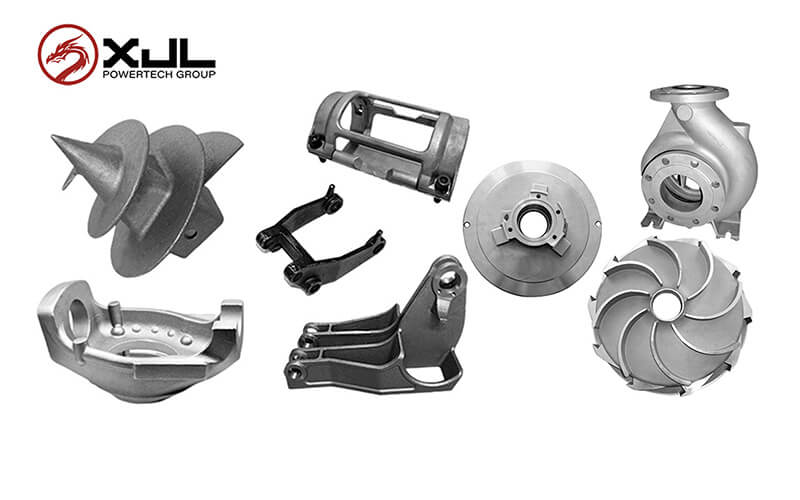Carbon steel
Mainly refers to the steel whose mechanical properties depend on the carbon content in the steel, and generally does not add a large amount of alloying elements, and is sometimes called ordinary carbon steel or carbon steel. Carbon steel is also called carbon steel, which refers to an iron-carbon alloy with a carbon content of less than 2% WC. In addition to carbon, carbon steel generally contains a small amount of silicon, manganese, sulfur, and phosphorus.
According to the application, carbon steel can be divided into three categories: carbon structural steel, carbon tool steel, and free-cutting structural steel.
- Carbon structural steel is further divided into building structural steel and machine-made structural steel;
- According to the smelting method, it can be divided into open-hearth steel, converter steel, and electric furnace steel;
- According to the deoxidation method, it can be divided into boiling steel (F), killed steel (Z), semi-killed steel (b), and special killed steel (TZ);
- According to the carbon content, carbon steel can be divided into low carbon steel (WC ≤ 0.25%), medium carbon steel (WC0.25%-0.6%), and high carbon steel (WC>0.6%);
- According to the content of phosphorus and sulfur, carbon steel can be divided into ordinary carbon steel (higher phosphorus and sulfur), high-quality carbon steel (lower phosphorus and sulfur), advanced high-quality steel (lower phosphorus and sulfur), and Premium quality steel.
Generally, the higher the carbon content in carbon steel, the greater the hardness and the higher the strength, but the lower the plasticity.
Similar Articles:
- 45 # steel
- Classification of carbon steel
- Classification, grades, and uses of carbon steel
- What is the difference between low, medium, and high carbon steel?
Stainless steel
Stainless and acid-resistant steel is referred to as stainless steel. It is composed of two parts: stainless steel and acid-resistant steel. In short, the steel that can resist atmospheric corrosion is called stainless steel, and the steel that can resist chemical medium corrosion is called acid-resistant steel. Stainless steel is high-alloy steel with more than 60% iron as the matrix and alloying elements such as chromium, nickel, and molybdenum added.
When the chromium content in the steel exceeds 12%, the steel is not easy to corrode and rust in the air and dilute nitric acid. The reason is that chromium can form a very tight chromium oxide film on the steel surface, which effectively protects the steel from corrosion. The chromium content in stainless steel generally exceeds 14%, but stainless steel is not free of rust. In coastal areas or some places with severe air pollution, when the chloride ion content in the air is large, there may be some rust spots on the surface of stainless steel exposed to the atmosphere, but these rust spots are limited to the surface and will not corrode the internal matrix of the stainless steel.
Generally speaking, steel with a content of Wcr greater than 12% has the characteristics of stainless steel. Stainless steel can be divided into five categories according to the microstructure after heat treatment: ferritic stainless steel, martensitic stainless steel, and austenitic stainless steel. , Austenitic-ferritic stainless steel and precipitation carbide stainless steel.
Stainless steel is usually divided into:
- Ferritic stainless steel. Chromium 12% to 30%. Its corrosion resistance, toughness, and weldability increase with the increase of chromium content, and its resistance to chloride stress corrosion is better than other types of stainless steel.
- Austenitic stainless steel. It contains more than 18% chromium, about 8% nickel, and a small amount of molybdenum, titanium, nitrogen, and other elements. It has a good comprehensive performance and is resistant to corrosion by various media.
- Austenitic-ferritic duplex stainless steel. It has the advantages of both austenitic and ferritic stainless steel, and has superplasticity.
- Martensitic stainless steel. High strength, but poor plasticity and weldability.
Similar Articles:
- 304 stainless steel
- Stainless steel casting
- Stainless steel knowledge
- Knowledge of stainless steel
- Process flow of stainless steel precision casting
- Classification and performance of stainless steel grades
Difference
- Different colors: stainless steel contains more chromium and nickel metals, and the appearance color is silver and bright. Carbon steel is mainly carbon and iron alloys, and other metal elements are relatively few. The main color of the appearance is the color of iron, and the color will be much darker.
- Different textures: stainless steel contains many other metal elements, and the surface is smooth, carbon steel contains more iron and carbon, and has the essence of iron, and the surface is not as smooth as stainless steel.
- Different magnetism: The surface of carbon steel is magnetic and can be attracted by magnets. Stainless steel is not magnetic under normal circumstances and will not be attracted by magnets.
- Different carbon elements: carbon steel mainly refers to the steel whose mechanical properties depend on the carbon content of the steel, and generally does not add a large amount of alloying metal elements. The carbon content WC is less than 2%. To maintain corrosion resistance, the carbon content of stainless steel is are lower, with a maximum of no more than 1.2%.
- Different alloy content: carbon steel contains very few alloying elements, only a small amount of silicon, manganese, sulfur, and phosphorus. Stainless steel contains a lot of gold elements, and the main chromium and nickel elements exceed 12%.
- Different corrosion resistance: carbon steel contains fewer alloying elements and weak corrosion resistance, while stainless steel contains more chromium-nickel metal, which has strong corrosion resistance.
Recent Articles:
- Casting technical requirements and analysis of common problems of steel castings
- What is the role of Mo in high manganese steel casting production?
- What effect does carbon have on cast steel and iron during smelting?
- Prevention and Analysis of Stainless Steel Casting Defects
- Causes of cracks in steel castings

